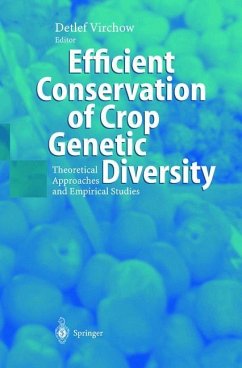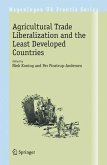The conservation of crop genetic resources is one of the important components in the effort to increase agricultural production in low-income countries in a sustainable manner and to guarantee long-term food security, especially for the low-income population groups in these countries. Without sufficient financial resources secured for the long term at national and international levels, the will to conserve crop genetic resources as expressed by all governments will only be paying lip service to the issue, thus threatening all conservation efforts. The articles in this publication contribute to the ongoing discussion about the costs of worldwide efforts to conserve crop genetic resources on the basis of theoretical and applied studies. Based on case studies in Columbia, India, Kenya and two genebanks of the CGIAR as well as some theoretical analysis, the publication aims to assist decision-makers at differents levels with information on the costs involved in the conservation of genetic resources. Thus, hightening the awareness of increasing the cost effectiveness of different conservation methods to sustain conservation efforts. These studies indicate in particular the need for sustainable financing of the conservation of crop genetic resources, an improvement of the cost effectiveness of the conservation activities and the establishment of a constant quality and cost monitoring process.
The book reflects the work in progress regarding the analysis of the costs of crop genetic resources conservation that has been conducted at various research insti tutes over the last couple of years, including research conducted at ZEF and asso ciated institutes. In addition, contributions in this publication were presented at a special session during the "Global Dialogue: The Role of the Village in the 2]'1 Century: Crops, Jobs and Livelihood" in Hannover, Germany, at the World Exposition in Au gust 2000. The purpose of the publication is to make a general contribution to the ongoing discussion about the conservation of crop genetic resources as part of the global strategy to secure increasing food production in a sustainable way. Specifically, it discusses the costs of the worldwide efforts to conserve crop genetic resources on the basis of theoretical and applied studies. It aims to serve decision-makers at dif ferent levels with information on the costs involved in the conservation of genetic resources and hence to increase the awareness of the importance of improving the cost effectiveness of different conservation methods in order to optimize the sus tainability of conservation. The quoted Leipzig Declaration, which was adopted at the Fourth International Technical Conference on Plant Genetic Resources in Leipzig in June 1996, dem onstrates the close linkage of the contributions to the ongoing discussion about the implementation of the Global Plan of Actionfor the Conservation and Sustainable Utili zation of Plant Genetic Resources for Food and Agriculture.
The book reflects the work in progress regarding the analysis of the costs of crop genetic resources conservation that has been conducted at various research insti tutes over the last couple of years, including research conducted at ZEF and asso ciated institutes. In addition, contributions in this publication were presented at a special session during the "Global Dialogue: The Role of the Village in the 2]'1 Century: Crops, Jobs and Livelihood" in Hannover, Germany, at the World Exposition in Au gust 2000. The purpose of the publication is to make a general contribution to the ongoing discussion about the conservation of crop genetic resources as part of the global strategy to secure increasing food production in a sustainable way. Specifically, it discusses the costs of the worldwide efforts to conserve crop genetic resources on the basis of theoretical and applied studies. It aims to serve decision-makers at dif ferent levels with information on the costs involved in the conservation of genetic resources and hence to increase the awareness of the importance of improving the cost effectiveness of different conservation methods in order to optimize the sus tainability of conservation. The quoted Leipzig Declaration, which was adopted at the Fourth International Technical Conference on Plant Genetic Resources in Leipzig in June 1996, dem onstrates the close linkage of the contributions to the ongoing discussion about the implementation of the Global Plan of Actionfor the Conservation and Sustainable Utili zation of Plant Genetic Resources for Food and Agriculture.








